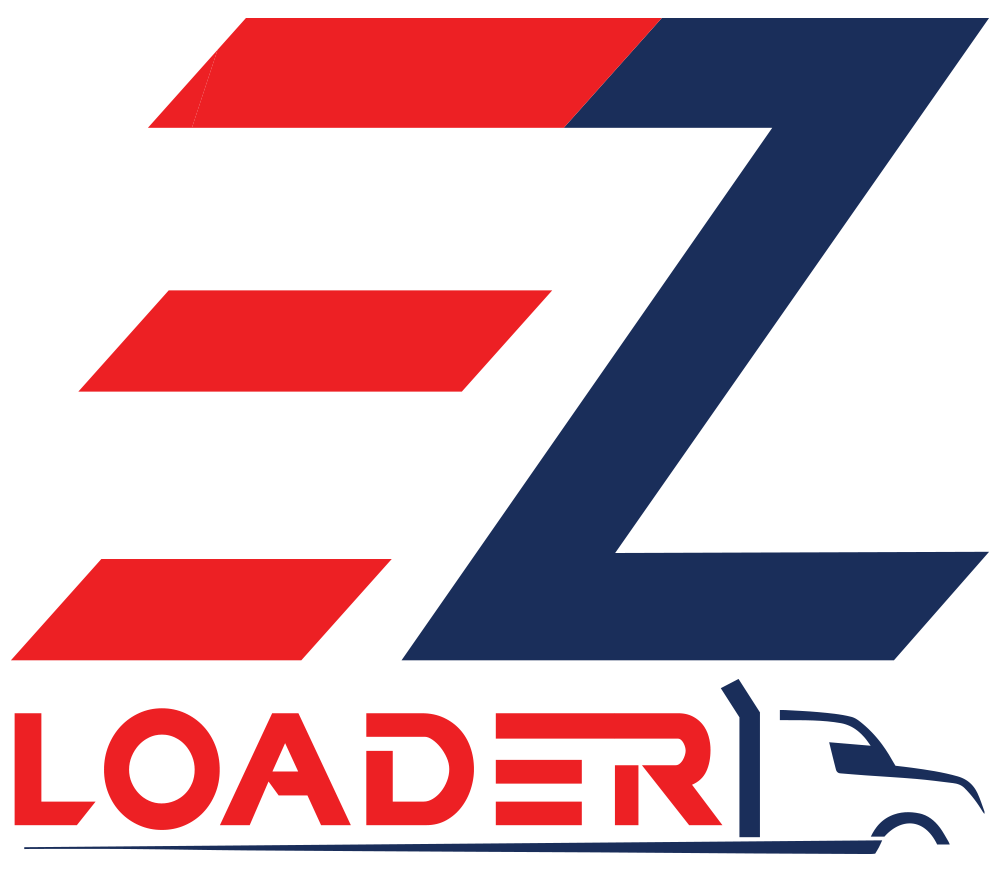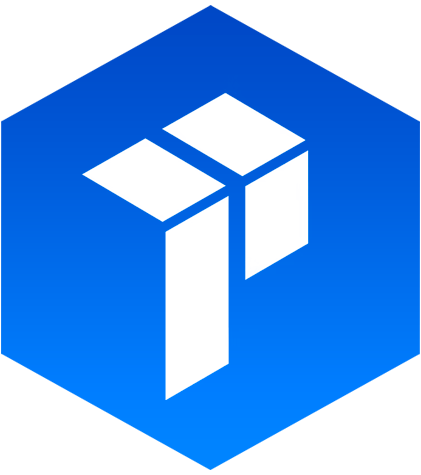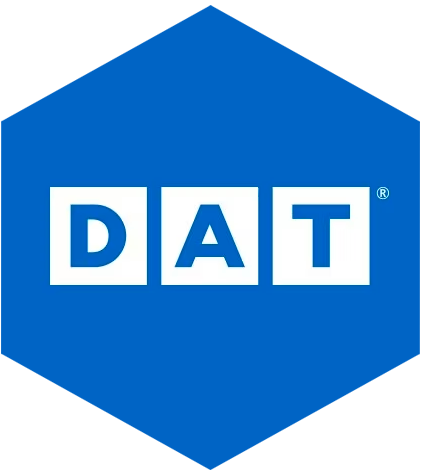TMS Software That
Puts Brokers First
Best Cloud-based Freight Broker Software Built for Full Truckload and LTL Shipping
The Perfect Partnership for Your Freight Brokerage
Simple and Powerful
Our TMS software provides an easy-to-use interface packed with features, integrations, and automation that will foster long-term scalability for your business.
Be Heard
Built on broker feedback, EZ Loader TMS remains true to its origin. Our development is deep-seated in our customer relations, providing regular updates based on our client’s needs.
Top Notch Support
Support is included and available around the clock. Whether it’s a technical issue or a question, our support team is here when you need us.
Flexibility
Let us find the right plan, integration package, and development needs that fit your business and satisfy your customers. Utilizing EZ Loader TMS will add flexible offerings for your team and clients.
Empower Your Freight Brokerage with EZ Loader TMS

Digital Documentation
Eliminate all paperwork! With EZ Loader’s built-in e-sign, digital documentation, and cloud-based document storage, you can ditch the printer. Our TMS software will save you valuable time by providing system-generated digital documentation through the load cycle.

Visibility
Visibility is a staple. Our TMS software provides transparency through the load cycle by providing live shipment tracking options through multiple avenues. Provide visibility to your clients their way by utilizing automated customer updates, external tracking links, or access to a customer portal.
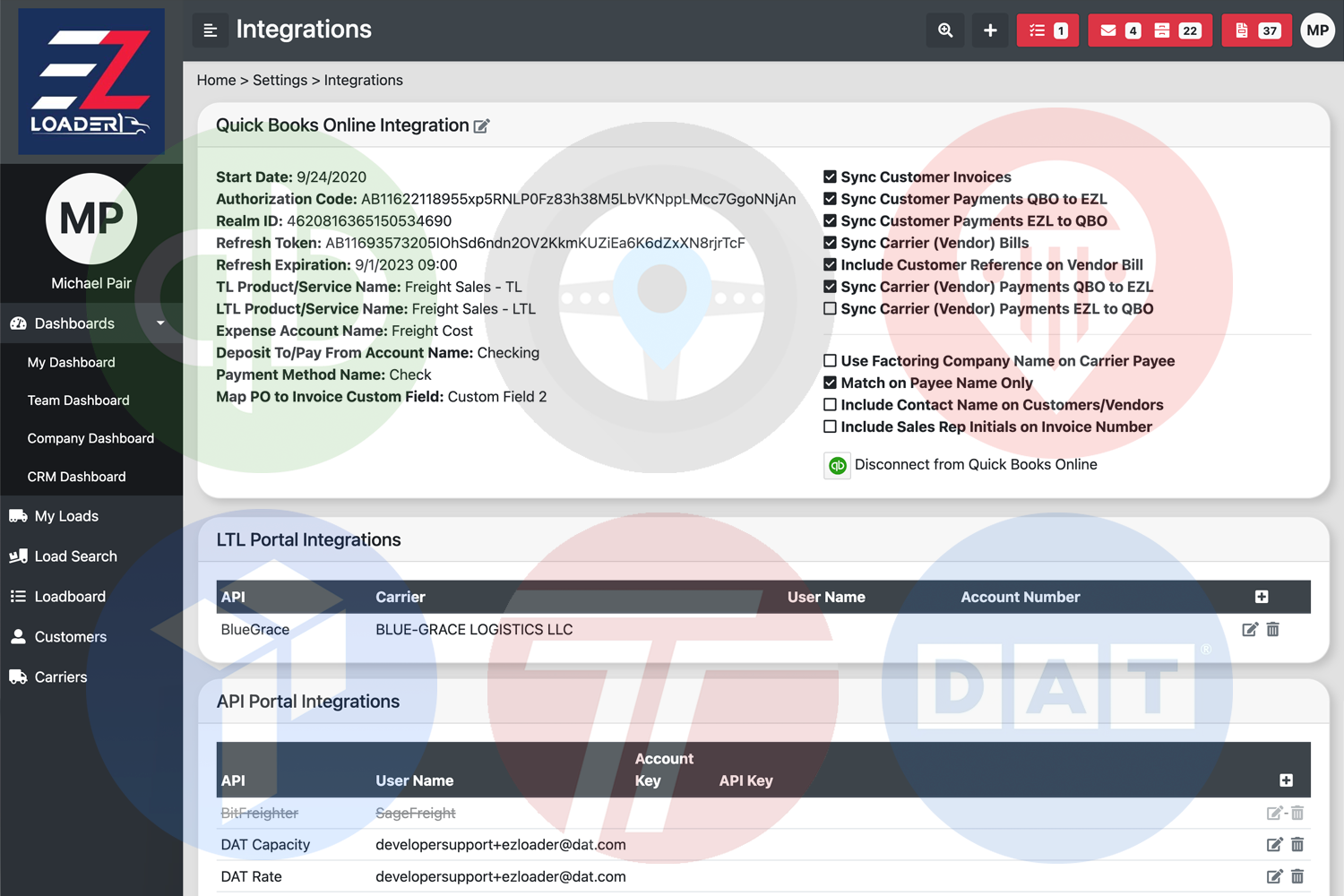
Integrations
Collaboration through integration. EZ Loader TMS provides integration options that cover all aspects of freight brokerage operations. From load boards to rating, capacity, tracking, accounting, and more, our TMS provides a total transportation management solution for your business.

Accounting Automation
Automate your back office. With customizable customer billing requirements and an automated batch invoicing cycle, EZ Loader TMS takes the tedious work out of managing your post-delivery operations. With integration options for accounting software and factoring companies, our TMS provides automated and scalable tools for your team.
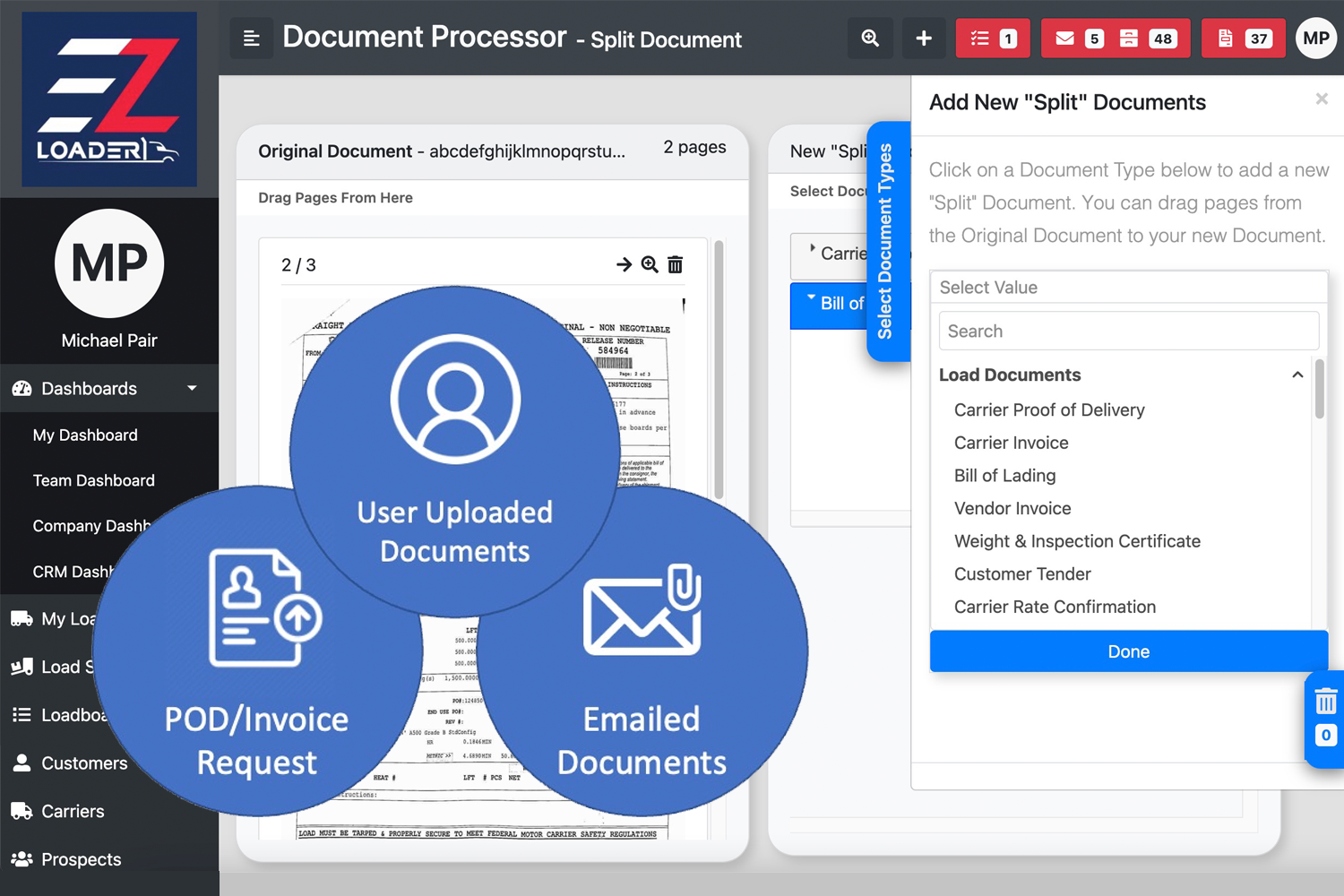
Document Management
Take the hassle out of documentation. EZ Loader reads your incoming emails, pulls out documents, and predicts data while importing them into the TMS for review. Never print a page again; EZ Loader will allow users to live split multiple page documents to segregate into appropriate document types while performing live audit functions.
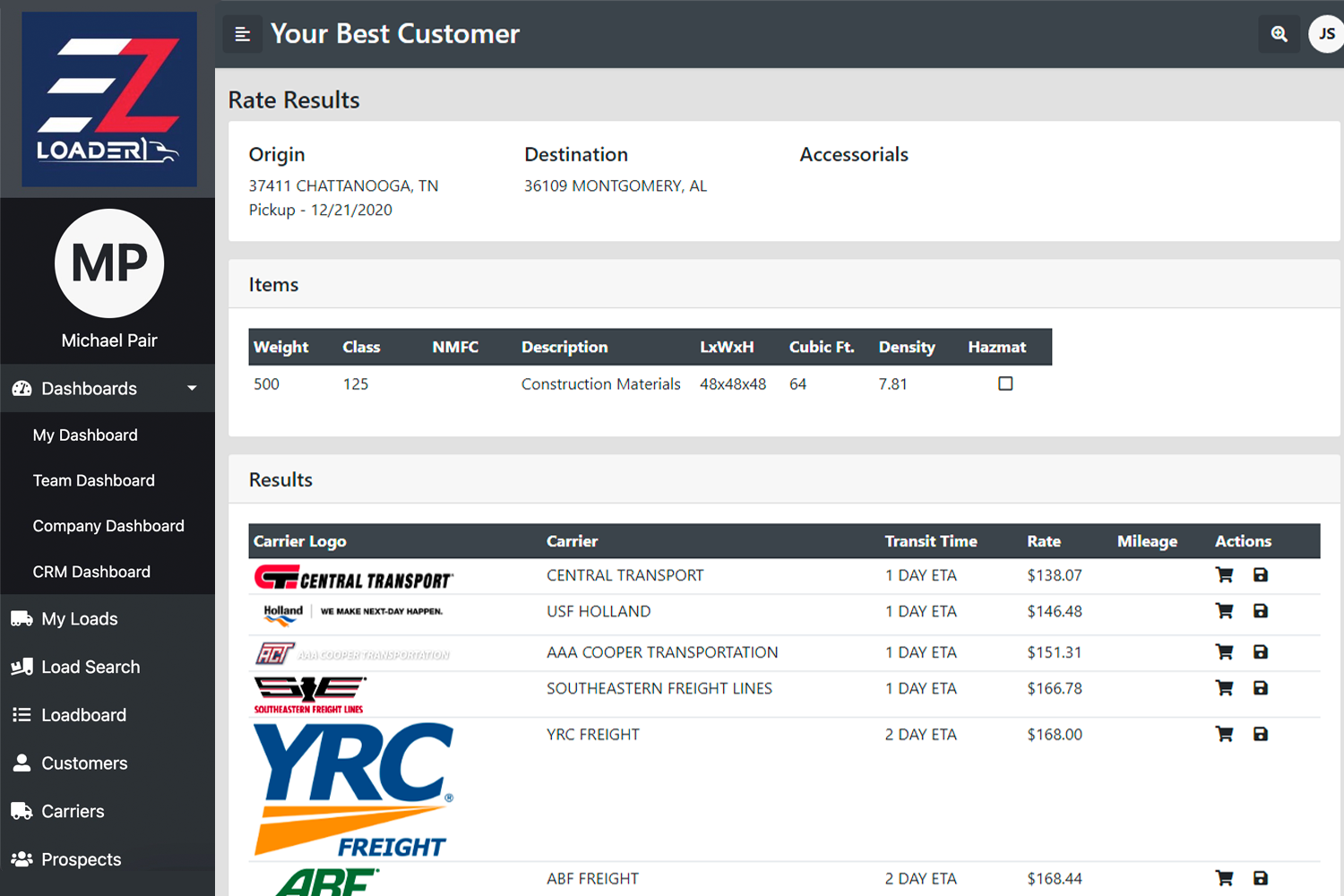
Customer Portal with LTL
Give your customer access to technology. With included customer portals, our TMS software provides truckload and LTL options for your customers. From rating, dispatching, and tracking freight, our portal allows customers to book LTL loads, view TL/LTL tracking, and pull documentation anytime.
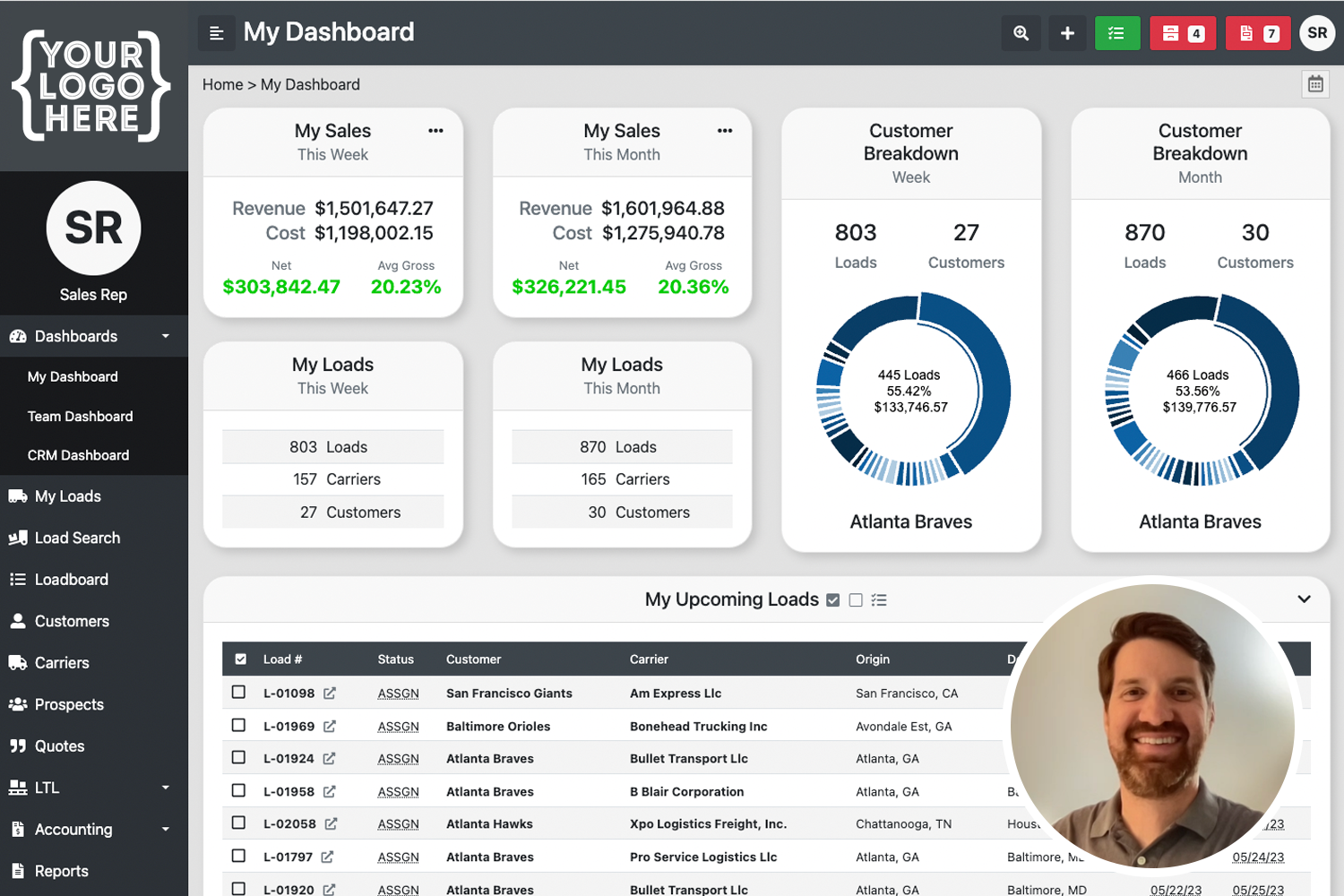
Personalized Onboarding and Support
Eliminate the hassle and stress of switching TMS platforms. Our Onboarding Reps are experts in data upload, integration setup, and personalized live team training. Our reps don’t stop once your team after onboarding. Your team will retain access to a dedicated rep who will support and provide assistance throughout the lifetime of your subscription.
White Label Platform
Enjoy the feeling of having your proprietary freight broker software. EZ Loader provides a fully brandable TMS solution. Our TMS allows for the branding of your website, your internal TMS, and your documents. Our customers can white-label URLs, digital web links and customize all agreement language within the platform.
Carrier Sourcing
EZ Loader TMS provides various sourcing solutions using integrations and internal system capabilities. Access public loadboards, look at live capacity, tender to qualified carriers, and cross reference available capacity with carriers base to find matches. Our TMS gives your reps an armory of carrier resources for quick and efficient load bookings.

Personalized Onboarding and Support
MashIt
White Label Platform
FabuFit
Carrier Sourcing
YesSuits

Eliminate the hassle and stress of switching TMS platforms. Our Onboarding Reps are experts in data upload, integration setup, and personalized live team training. Our reps don’t stop once your team after onboarding. Your team will retain access to a dedicated rep who will support and provide assistance throughout the lifetime of your subscription.
MashIt
Enjoy the feeling of having your proprietary freight broker software. EZ Loader provides a fully brandable TMS solution. Our TMS allows for the branding of your website, your internal TMS, and your documents. Our customers can white-label URLs, digital web links and customize all agreement language within the platform.
FabuFit
EZ Loader TMS provides various sourcing solutions using integrations and internal system capabilities. Access public loadboards, look at live capacity, tender to qualified carriers, and cross reference available capacity with carriers base to find matches. Our TMS gives your reps an armory of carrier resources for quick and efficient load bookings.
YesSuits

Slide title
Eliminate the hassle and stress of switching TMS platforms. Our Onboarding Reps are experts in data upload, integration setup, and personalized live team training. Our reps don’t stop once your team after onboarding. Your team will retain access to a dedicated rep who will support and provide assistance throughout the lifetime of your subscription.
Button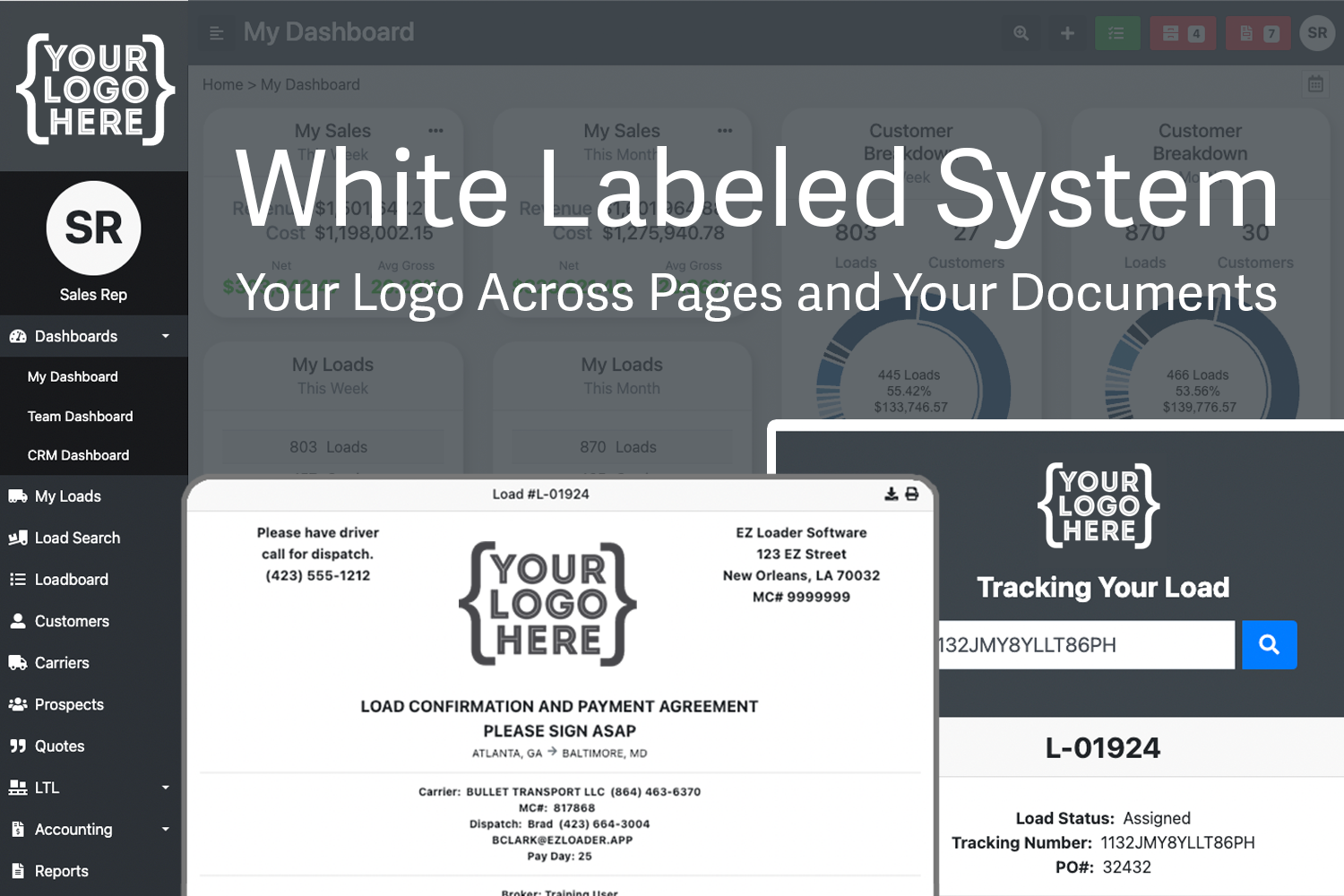
Slide title
Write your caption hereButton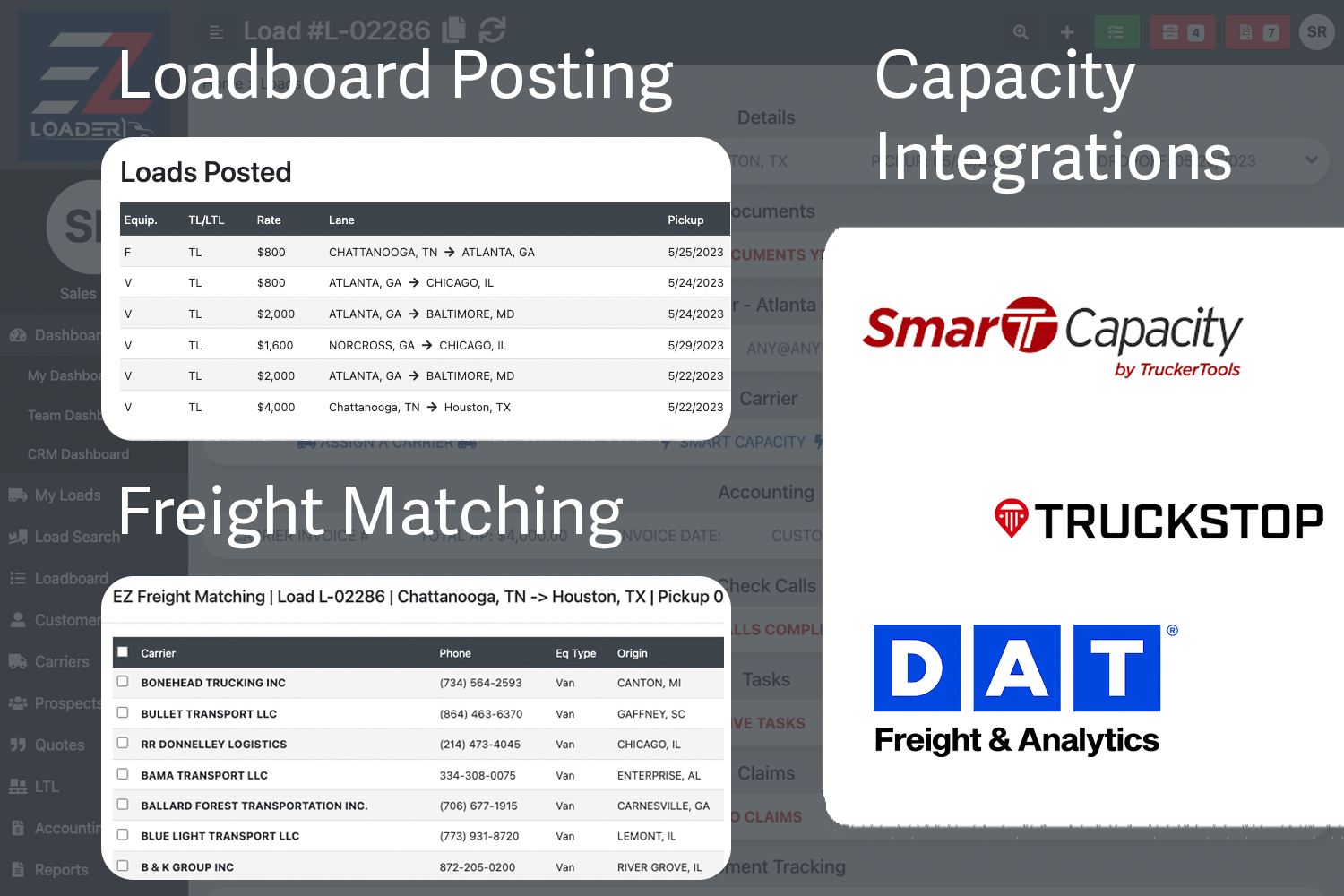
Slide title
Write your caption hereButton
Managing Your Business Doesn’t Have To Be Hard
Our arsenal of features will give your team the tools to streamline logistics operations. See below a list of our top features, and visit our features page for a more in-depth look.
Built-in CRM
Build, manage, and analyze your prospect pipeline inside the TMS
E-sign Documentation
Ditch the paperwork and utilize electronic documentation for rate cons, tenders, carrier packets, and more
Team Task Manager
Assign tasks for yourself and other team members. Monitor tasks across your team’s pipeline for accountability
Automated Batch Invoicing
Automate your batch invoicing by setting specific schedules for batches on a per-client basis
Rating & Capacity
Pull in market rates and view live capacity for truckload and LTL
Freight Matching
Utilize a combination of location, lane history, and equipment types to send digital load tenders to qualified carriers
Carrier Document Upload
Send external links to carriers and drivers for direct upload of PODs and Carrier Invoices
Customer Portals
Establish unlimited logins for any client at no extra cost allowing access to rates, tracking, and paperwork in a portal
Digital Carrier Onboarding
Save money by utilizing a digital carrier onboarding experience built right into your TMS
Tracking Options
Execute live driver tracking from the TMS and view live maps, ETAs, and mileage.
Custom Invoice Audits
Customize each unique customer’s billing requirements and allow our TMS to read invoicing requirements on each load accordingly
Live Company Dashboards
View and analyze a snapshot of your companies sales, operations, and accounting
Recent Update Releases
Stay up-to-date with our new and current freight broker software releases. With frequent updates, our TMS software is always moving forward.
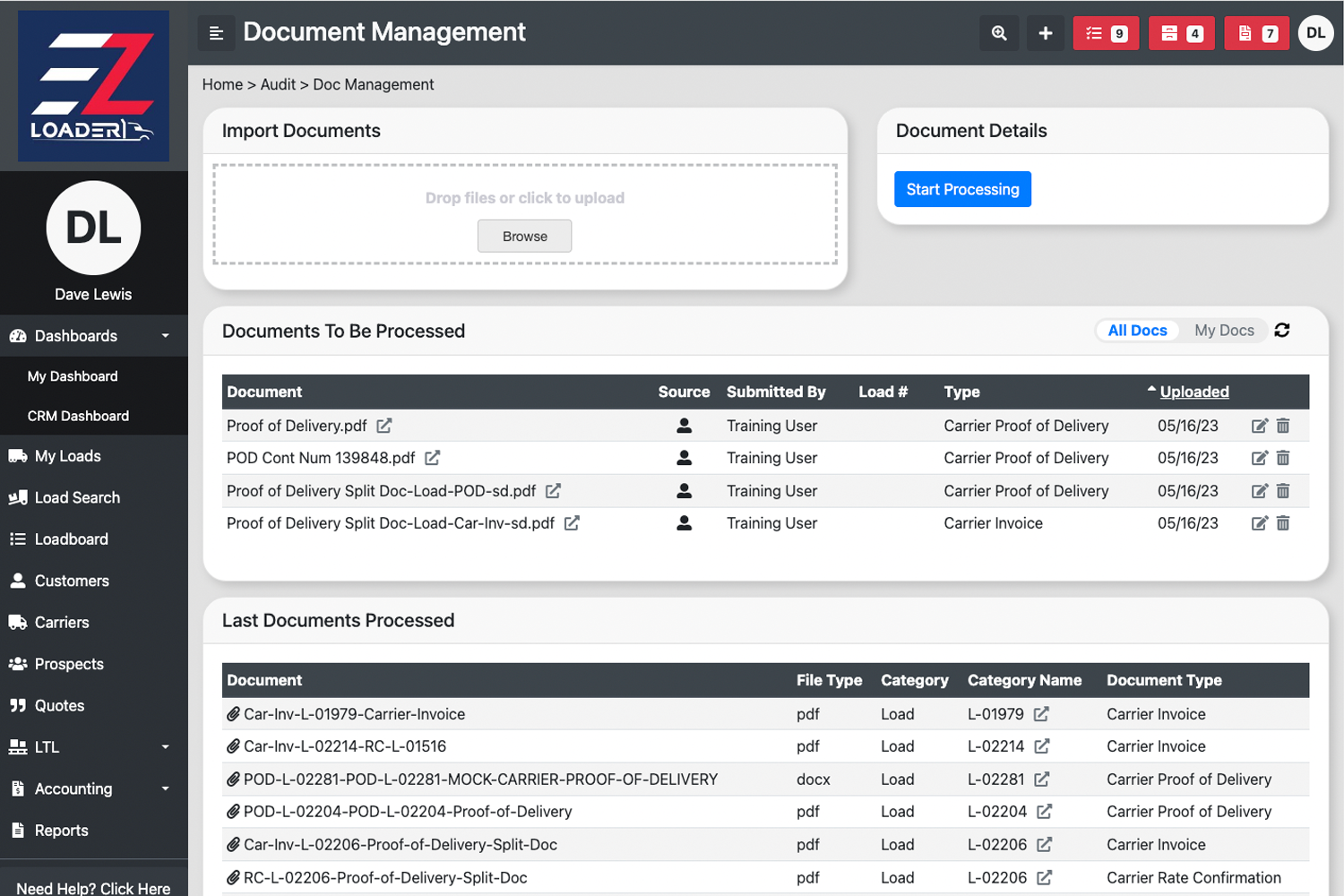
Document Management
In today's fast-paced logistics and transportation industry, efficient document management is paramount for companies to maintain a competitive edge.
External Tracking Link
With the introduction of Live Tracking Links, EZ Loader TMS empowers its users to provide real-time tracking updates to their customers without needing a customer portal login.
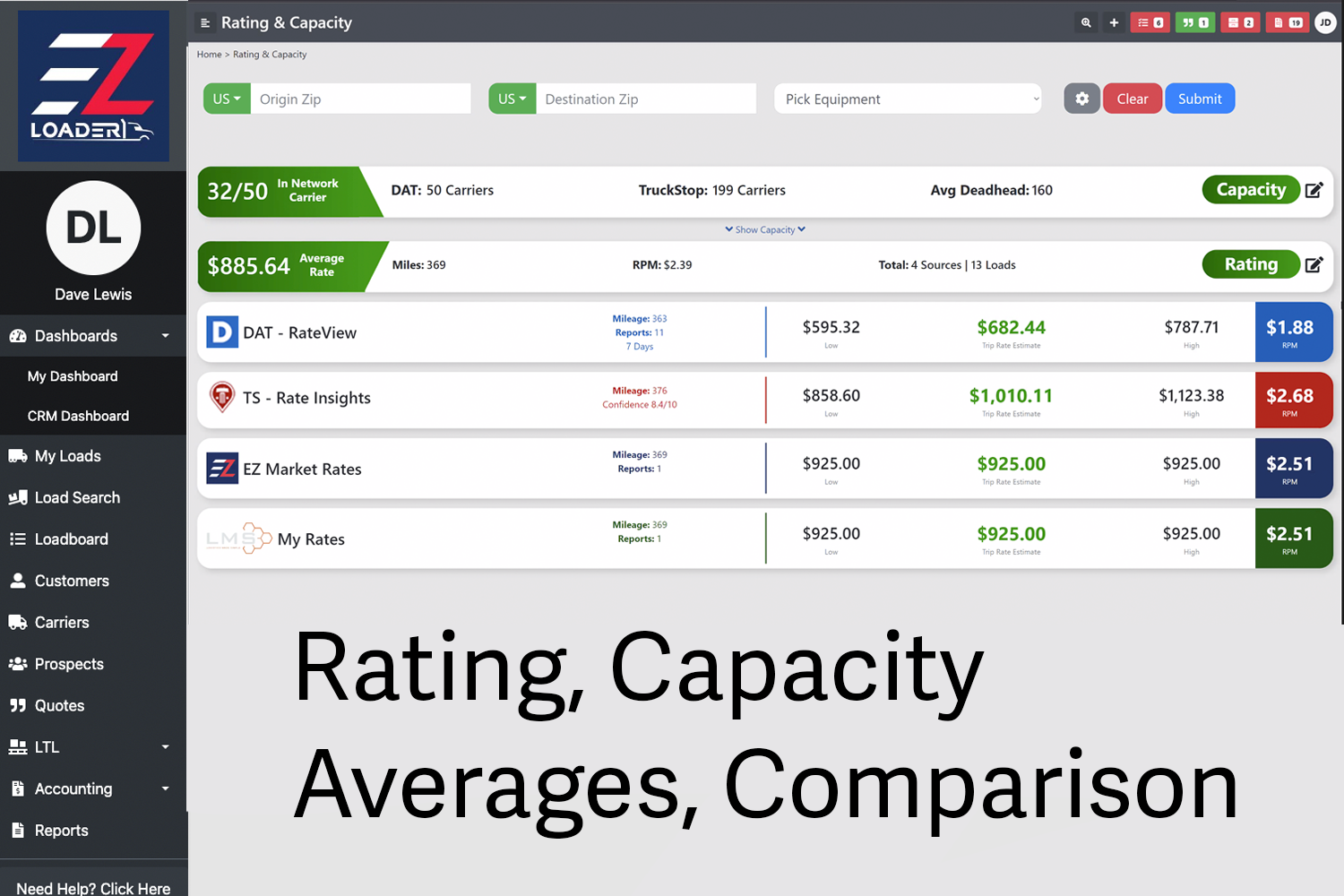
Rating and Capacity
Beyond its array of remarkable features, EZ Loader TMS has recently unveiled a groundbreaking integration that sets a new standard for the industry— Rating and Capacity.
Coming Soon
Here is the next feature coming to EZ Loader TMS. See below for feature details and visuals!
Radius Searching
In the coming weeks, we will be introducing Radius Searching. Allowing you to carrier source by searching for a radius around a location. Example - "Give me all of the carriers that have picked up a load within 100 miles of Atlanta"
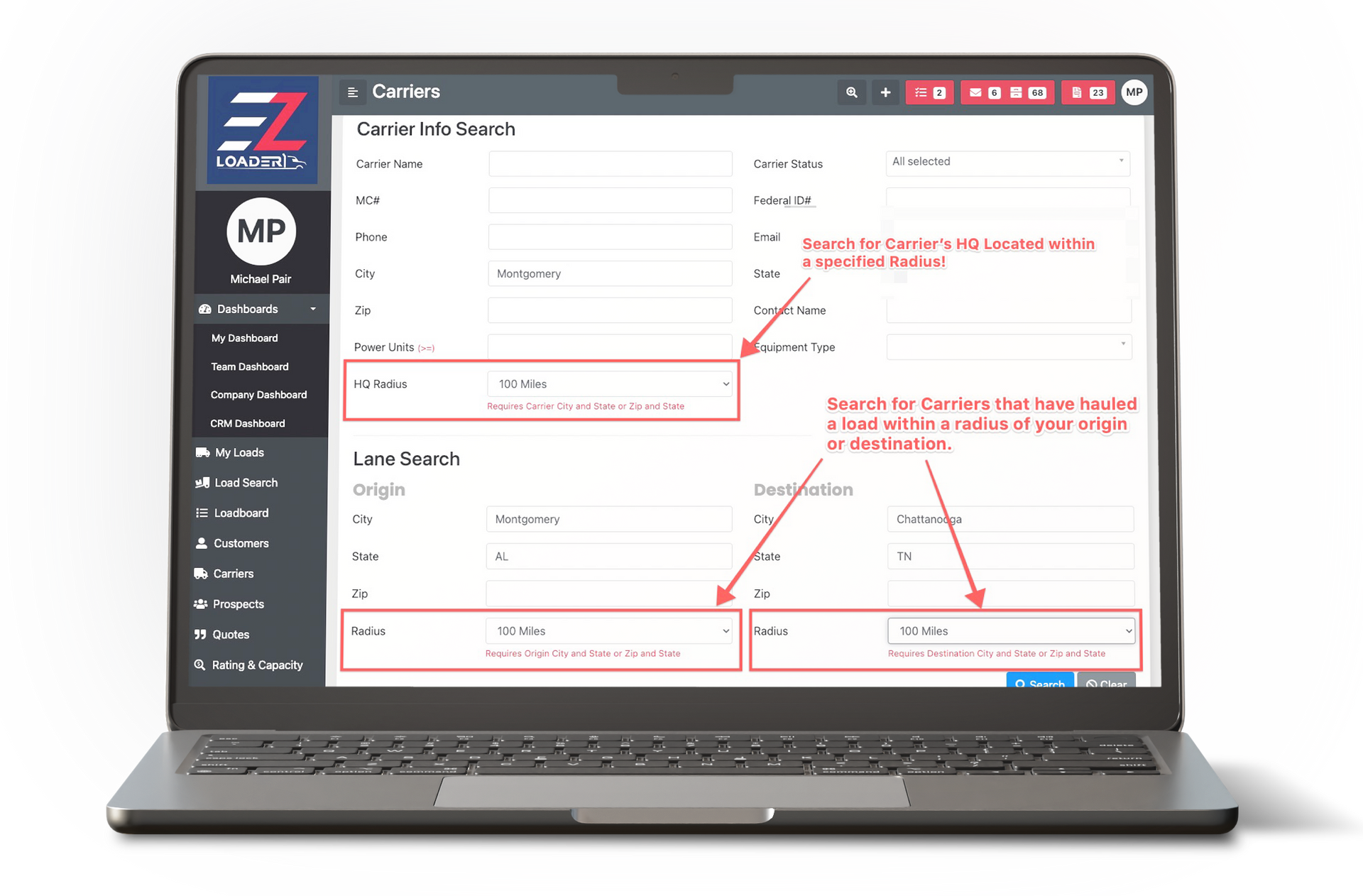
EZ Loader Testimonials
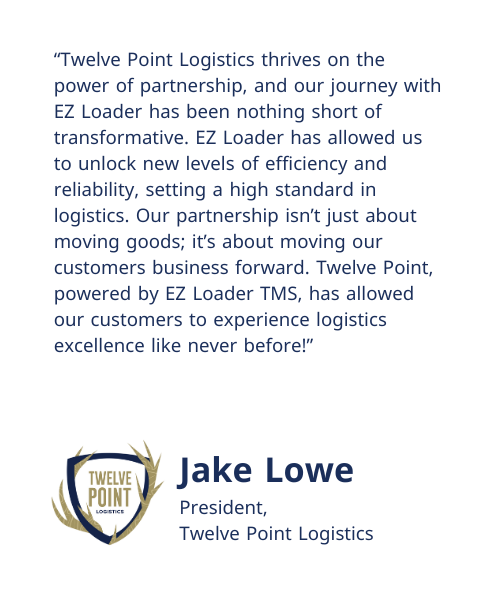
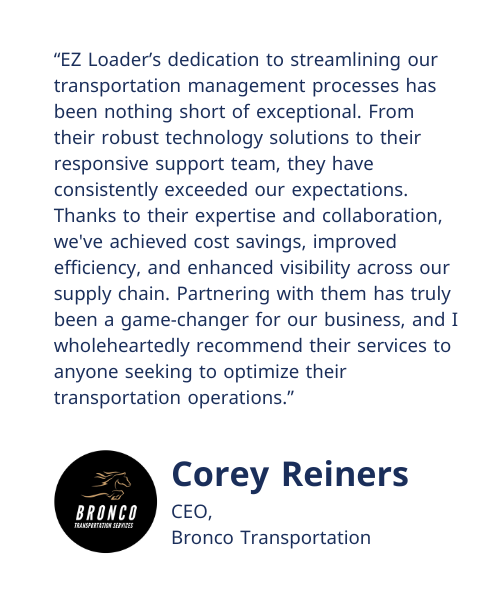
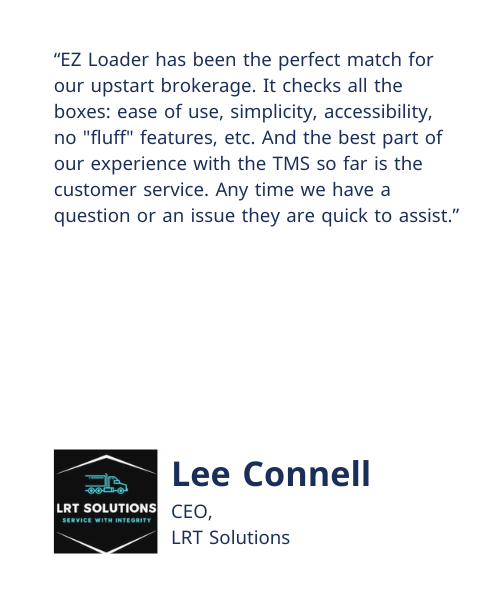

Features
Useful links
Resources
Contact Us
Find Us
5726 Marlin Road, Ste. 400
Chattanooga, TN 37411
Follow Us
All Rights Reserved | EZ Loader TMS | General Terms and Conditions | Powered by Flypaper | Privacy Policy
